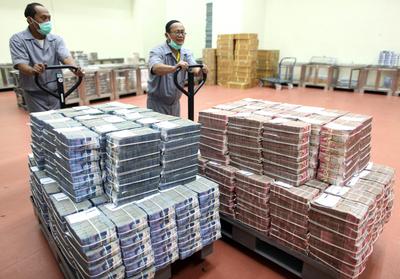The CPI tends to overstate rises in the true cost of living because it ignores substitution between goods as relative prices change. The CPI also ignores changes in consumer shopping patterns such as shifting to cheaper outlets. Finally, changes in product quality and the availability of new goods can lead to distorted CPI figures too, because the index does not always capture the associated savings. International evidence suggests that the CPI exaggerates increases in the cost of living in a range of countries.
This bias may be especially relevant for Indonesia. The country has suffered a number of price shocks, and this makes it difficult for statisticians to keep up with substitution between goods and changes in access to new — and cheaper — goods.
The Indonesian CPI is a modified Laspeyres index that measures the price of a range of goods and services over a particular period. But given significant price shocks since 1993, the CPI should not be relied on as a sole measure of the changing cost of living.
For example, in September 1998, during the Asian Financial Crisis and its immediate aftermath, the year-on-year inflation rate exceeded 50 per cent. After February 1999 the inflation rate stabilised, but the removal of fuel price subsidies in late 2005 caused the inflation rate to approach 18 per cent. By 2000, according to the CPI the price level faced by households was almost three times as high as in 1993. By 2008, households confronted prices over five times higher than in 1993.
These substantial rises in prices make it very difficult to accurately measure the cost of living using the CPI alone. But by inferring the true cost of living directly from consumer behaviour it is possible to quantify the bias in the CPI as a cost of living indicator. The consumer behaviour relied on is that as real income rises over time, and provided that all else stays equal, the share of the budget that is allocated to food will fall. This means that any movement in food share can be used as an indicator of change in real income.
Recent research finds that the CPI in Indonesia understated the rise in the cost of living during the Asian Financial Crisis. From 2000 to 2008, on the other hand, the CPI has consistently overstated the rise in the cost of living.
Since 2000 the share of the household budget that goes to food has substantially declined. This decline suggests that households in urban Indonesia have been getting richer at a faster rate than is implied by the rate of growth in CPI-deflated income. Between 1993 and 2008, for example, this CPI bias averaged four percentage points annually. This is equivalent to almost one-third of the average annual rate of inflation over the same period.
So what does this mean for Indonesia? Firstly, Indonesian families are getting richer faster than the official data suggest. Secondly, the Asian Financial Crisis hit Indonesian households more severely than the official record lets on.
The bias is particularly important for policy makers. The central bank of Indonesia has targeted inflation since 2001. Some have suggested that if the goal of an inflation target is to preserve the value of money, then the bank should aim for CPI increases that equal the rate of positive bias in the CPI. But this is not necessarily appropriate for Indonesia because the CPI bias is simply too volatile to provide a practical basis for setting an inflation target. And, in any case, the only bias measured so far concerns changing living standards over time, which is subtly different from changes in the value of money over time.
The CPI is widely used to measure inflation, but it doesn’t accurately reflect long-run changes in the cost of living. Alternative measures suggest that real living standards of Indonesians are rising at a faster rate than previously thought.
Susan Olivia is Research Fellow at the Department of Econometrics and Business Statistics, Monash University.
John Gibson is Professor at the Department of Economics, University of Waikato.

